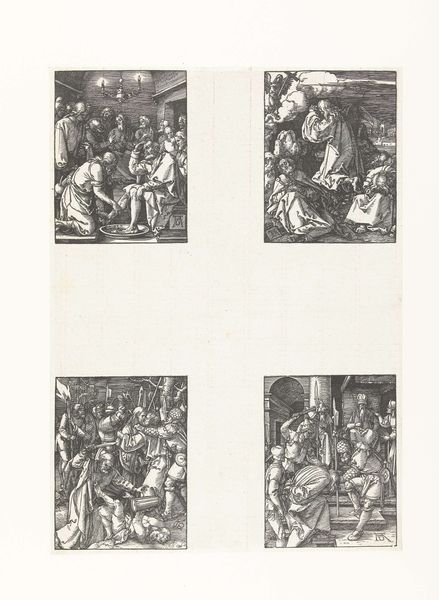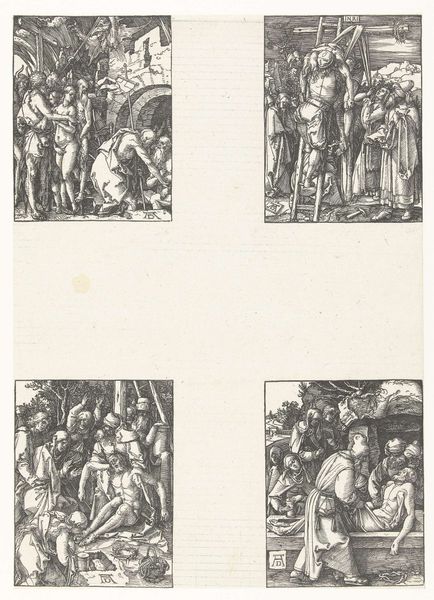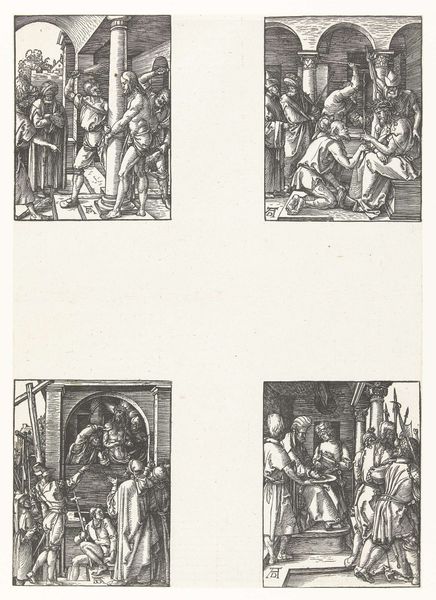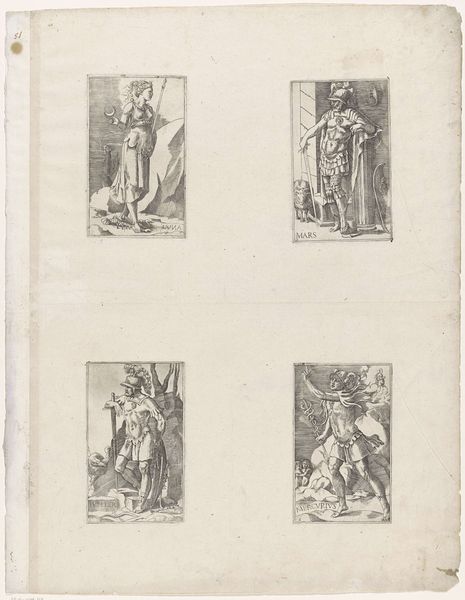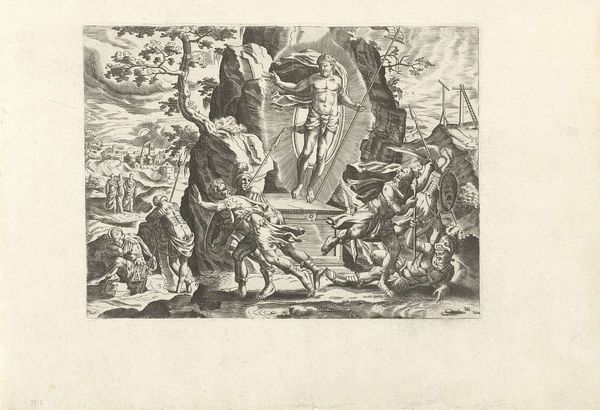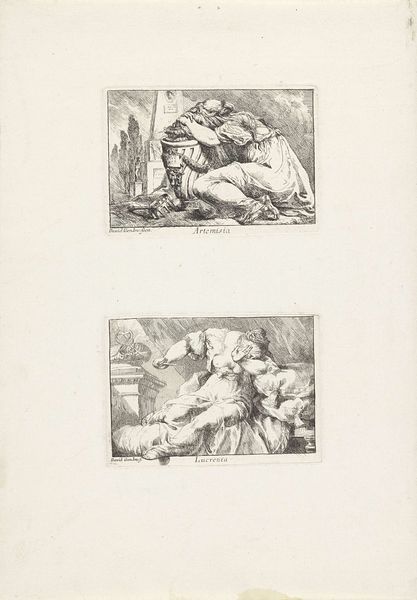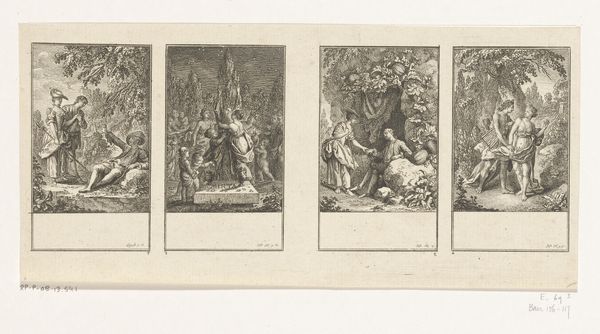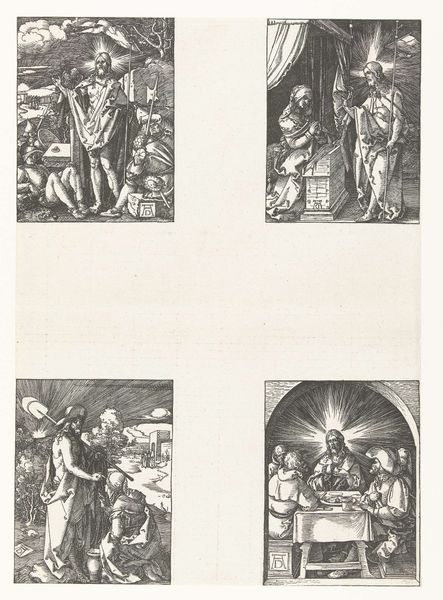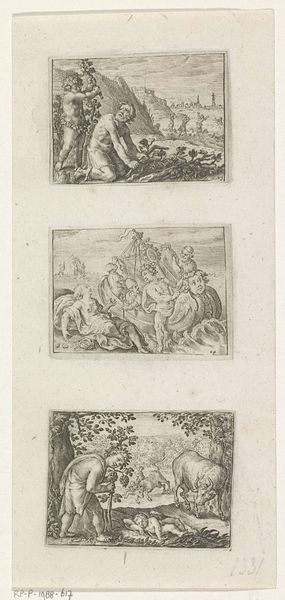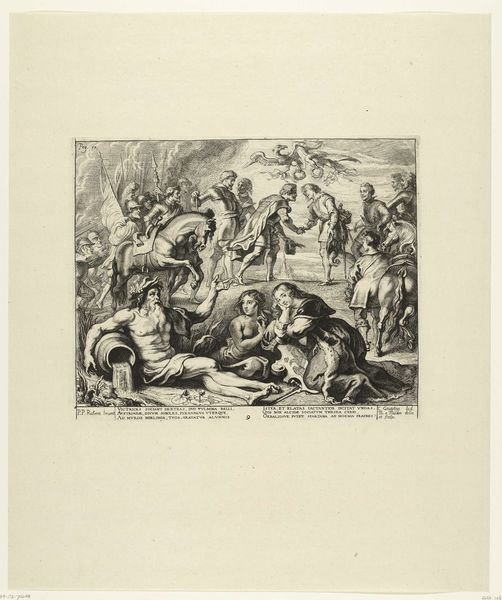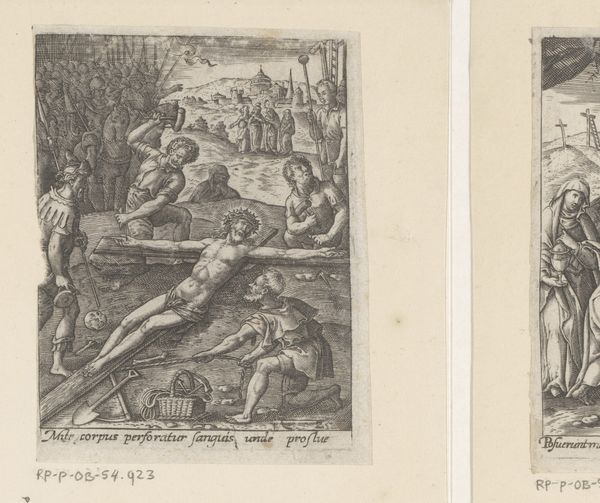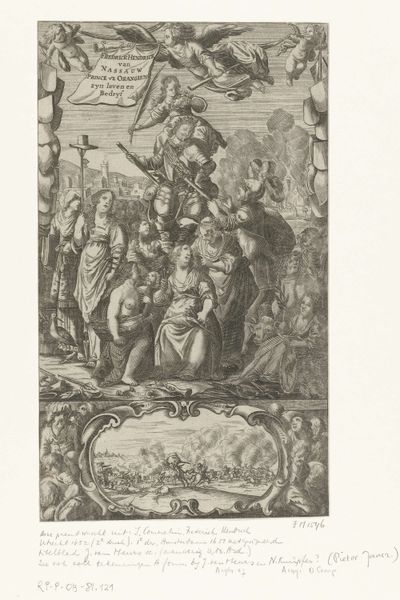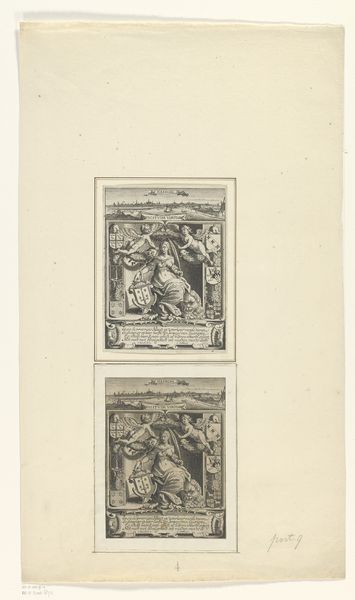
Zondeval, Adam en Eva verdreven uit het paradijs, Annunciatie, Aanbidding der herders 1510
0:00
0:00
albrechtdurer
Rijksmuseum
print, engraving
#
narrative-art
# print
#
pencil sketch
#
figuration
#
history-painting
#
northern-renaissance
#
engraving
Dimensions: height 127 mm, width 97 mm, height 352 mm, width 252 mm
Copyright: Rijks Museum: Open Domain
Curator: This engraving, made around 1510, is by Albrecht Dürer. It’s called "The Fall of Man, Adam and Eve expelled from Paradise, Annunciation, Adoration of the Shepherds.” It presents a narrative that encapsulates both original sin and the promise of redemption. Editor: My first impression is one of striking contrast. The precision of the line work in such miniature scale creates a series of powerful, almost gothic vignettes. There's a tension in the compressed compositions, particularly in "The Fall." Curator: Absolutely. And consider the societal impact of Dürer's work. Prints like these democratized art. Before this, biblical scenes were mainly for wealthy patrons and churches. Dürer made these crucial religious moments available to a broader public. He was shaping a collective understanding of morality and salvation through mass production. Editor: I'm drawn to how Dürer organizes space within each frame. Look at the "Annunciation"—the interplay of light and shadow, the dove representing the Holy Spirit, the architectural frame—each element directs the viewer's eye to Mary. It is really elegant. Curator: That architectural detail reinforces the power of the church during that time, placing these figures in both the tangible and the spiritual world, thus cementing religious institutions influence through visual storytelling. Also, this artwork functions almost like a medieval manuscript, inviting you to reflect on humanity and spirituality at the beginning of the Reformation. Editor: Yes, seeing those frames placed so closely together certainly draws me to meditate and reflect. And the symbolism, it has depth, as in "The Adoration" how do you create humility? The answer seems to lie in his technical ability: the angles, and the use of light which gives it intimacy. I am constantly amazed by this medium. Curator: Dürer's dedication to detail wasn’t simply for art's sake; it had a purpose. He recognized the social influence an image holds and made use of that to promote ideals. Editor: A very well used and moving artwork. Curator: I think so too, Durer's artistry truly allowed a visual translation of faith.
Comments
No comments
Be the first to comment and join the conversation on the ultimate creative platform.
